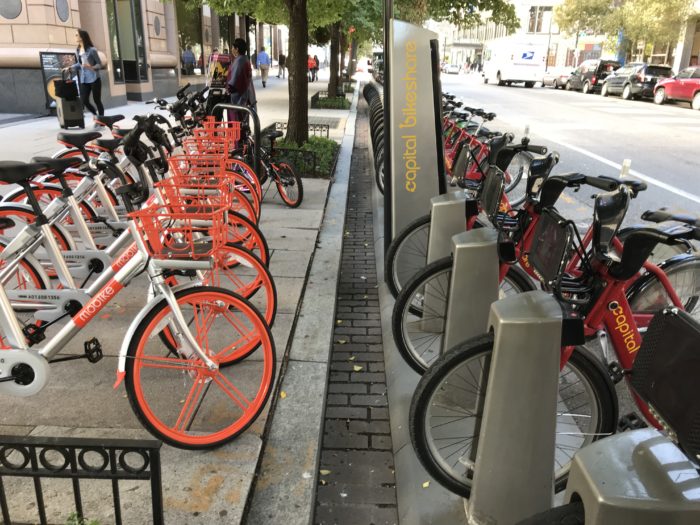
Communities large and small across the U.S. are introducing bikeshare systems as integral parts of their mobility networks. Bikes have long shown themselves as essential to mobility by supporting people in need, as well as supporting transit systems by making routes more accessible to people outside of walking distance. Considering even traditionally car-centric government agencies are rethinking biking and bike networks, planners building out bikeshare are making important investments in mobility for their residents.
Pittsburgh, Pennsylvania, has even gone so far as to provide free rides on Healthy Ride, the local bikeshare system, with use of a transit card. The program was designed to make the city and its transit system more accessible to all members of the community by giving them affordable options to get around.
Even in Detroit, the Motor City, their system, MoGo, had a successful summer. Next year it plans to make its system more accessible by introducing adaptive bikes, like tricycles, handcycles, and tandems, opening this option up to as many residents as possible.
The private sector even views the growth of bikeshare as a great investment opportunity. Much like in the early days of ride-hailing companies, private bikeshare operators have figured out how to enter markets and draw users. As a result, there is a similar race for market share just as Uber and Lyft did, resulting in abundant and cheap bike rides for more people. There are hopes these new providers could fill the gaps where publicly funded systems don’t exist, as well as free up resources to focus on bike infrastructure rather than building more docks.
These venture capital-subsidized companies have raised some eyebrows on a few levels. The most prominent concern is that a flood of dockless bikes will overrun a city and undermine the value of and support for existing bikeshare programs. There will be plenty of commentary over how cities handle their new services, and what that means for bikeshare systems around the country. On the flip side, these companies could also show that multiple companies and systems will help the model thrive and further support community mobility.
Image Credit Andrew Carpenter, CTAA


